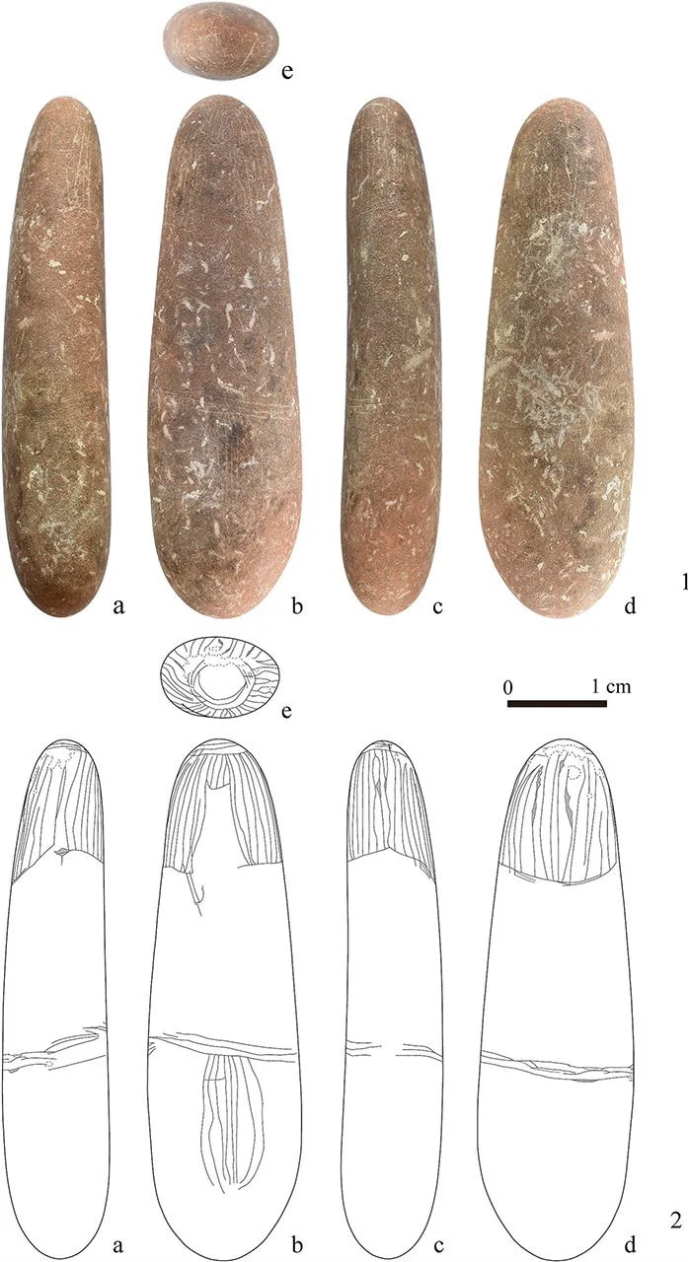8,400-Year-Old Mesolithic Figurine Discovered in Azerbaijan Redefines Prehistoric Art in the Caucasus!
A remarkable archaeological find at Damjili Cave, nestled among the limestone hills of western Azerbaijan, is changing what we know about prehistoric life in the South Caucasus. A small stone figurine, uncovered in a layer dating from around 6400 to 6100 BCE — right at the dawn of the Neolithic era — is now the earliest known three-dimensional human figure from the Mesolithic period in this region.
A Glimpse into the Distant Past
Measuring just 51 millimetres in length and 15 millimetres in width, the sandstone figurine was unearthed during a joint Azerbaijani-Japanese excavation conducted between 2016 and 2023. It had been carefully preserved for over 8,000 years beneath layers of ash and soil.
Unlike the fuller-bodied clay fertility figures common in later Neolithic farming communities, the Damjili figurine is abstract, upright, and androgynous. It has no obvious gender traits or facial features. Instead, faint carvings hint at stylised details: parallel lines that might represent a fringe or short hair, a headband or ritual headdress, a striped belt, and vertical grooves suggesting a loincloth or clothing.
Experts believe the figure likely served a symbolic or ritualistic purpose rather than being purely decorative. Dr Yagub Mammadov, head of the Azerbaijani-Japanese Damjili International Archaeological Expedition and a historian at the Azerbaijan National Academy of Sciences (ANAS), told Report news agency that no similar figurines have ever been found in Mesolithic settlements across the Kura River basin or the wider Caucasus. The figurine was discovered by ANAS researcher Ulviyya Safarova and later analysed using advanced laboratory techniques in Japan.
Deliberate Craftsmanship Revealed
Detailed analysis — including X-ray fluorescence and scanning electron microscopy — confirmed that the engravings on the figurine were intentionally made using Mesolithic stone tools. Although iron oxides have left a reddish tint on the object, no traces of original paint were found. Nevertheless, researchers suggest it could have been painted or involved in pigment-related rituals in the past.
A recent study published in Archaeological Research in Asia proposes that this small object may represent a distinctive symbolic tradition that existed before the better-known "Neolithic package" associated with the rise of agriculture.
Changing Views of Prehistoric Culture
The discovery supports the "staging hypothesis," which argues that Neolithic traits like farming, pottery, and symbolic art didn’t emerge all at once from the Fertile Crescent but rather developed gradually over time. The stylistic differences between this Mesolithic stone figure and later seated, highly stylised Neolithic female figurines point to a break in both artistic style and ideological beliefs.
Prior to this, most Mesolithic art in the region had been limited to rock engravings, such as those at Gobustan. Portable pieces like the Damjili figurine are rare, making this find an extraordinary insight into how ancient South Caucasian societies viewed the human form and expressed symbolic ideas.

